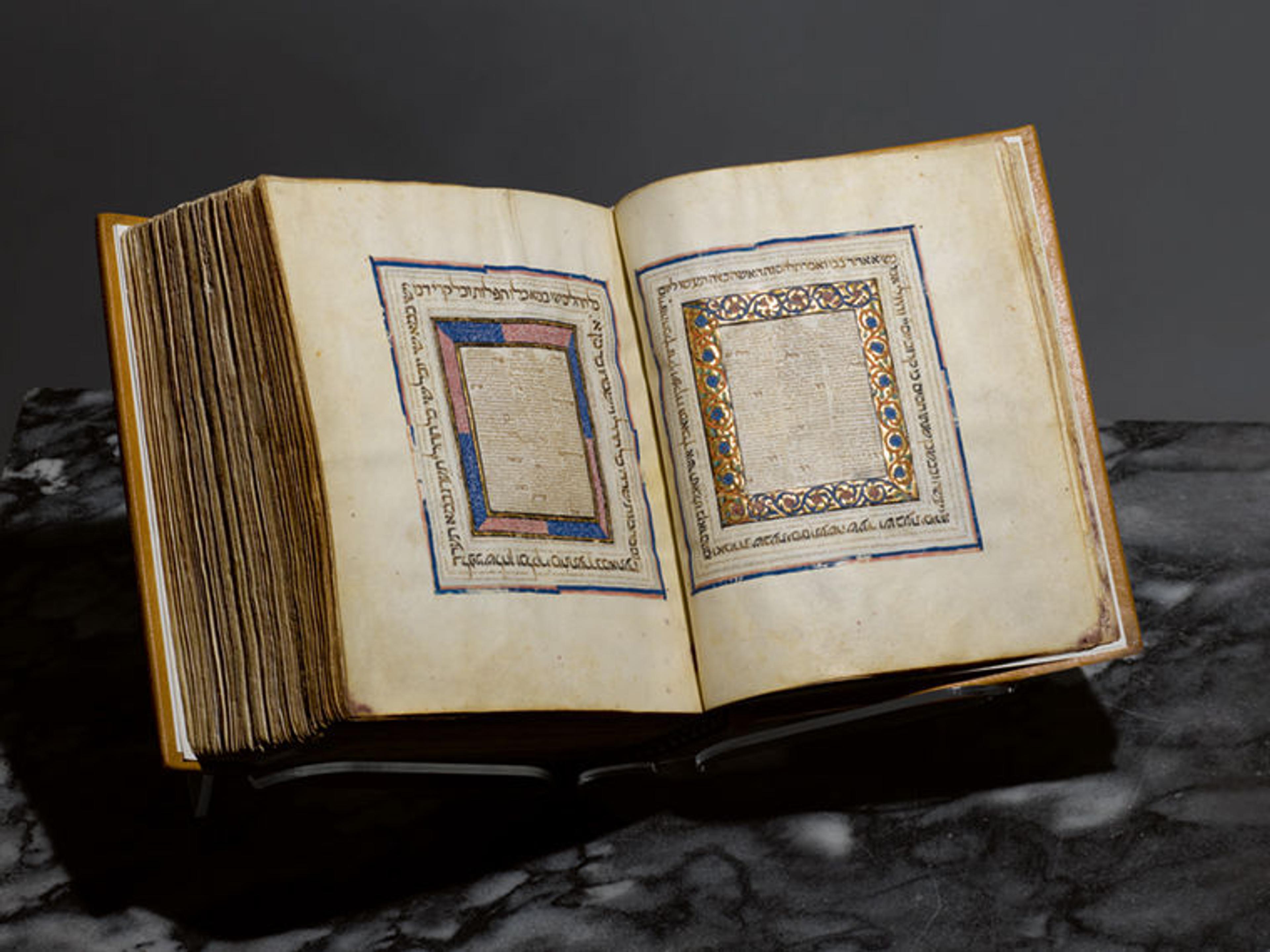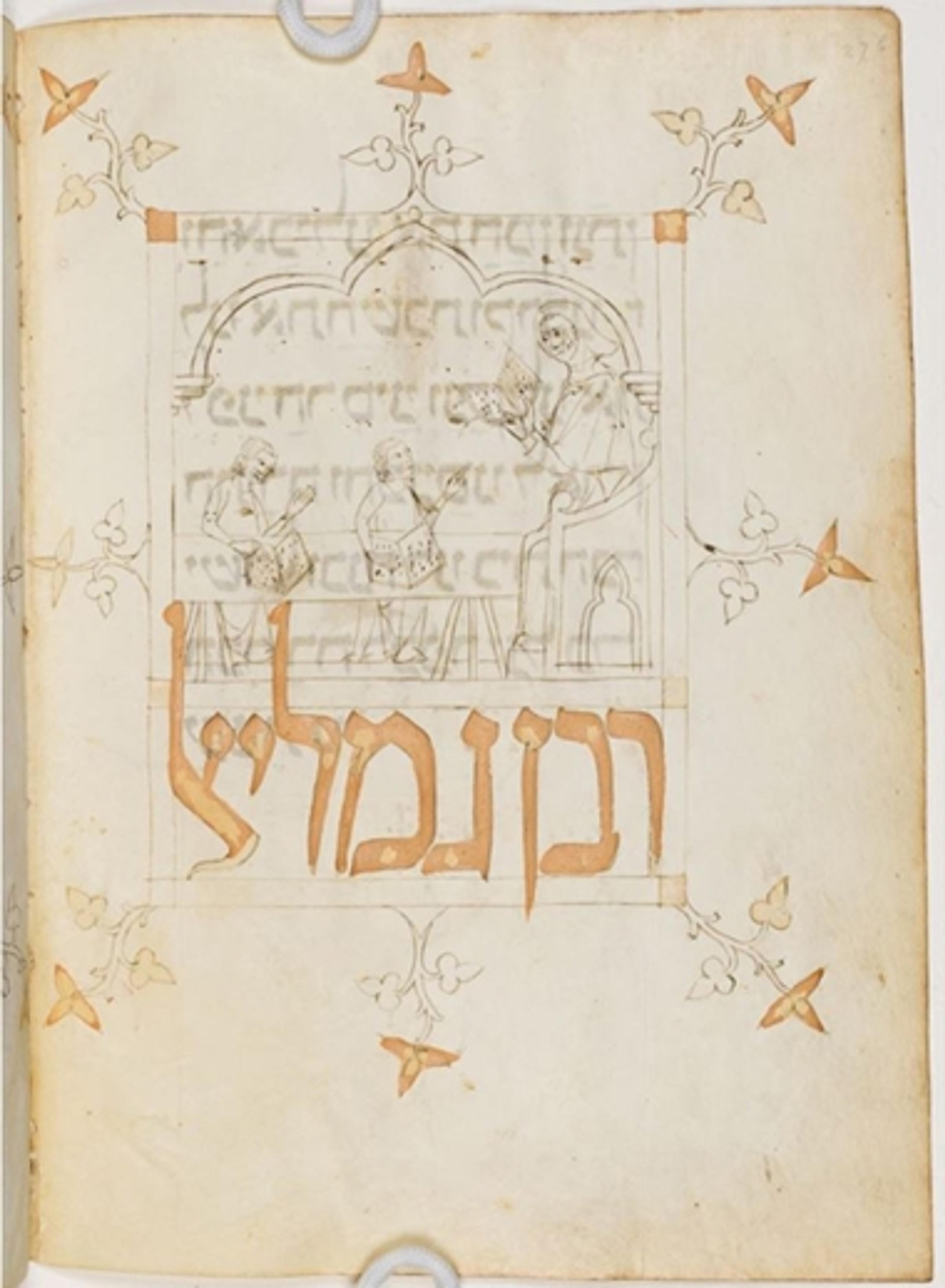
Hebrew Bible, 1300–1350 (before 1366). Spanish, Castile. Ink, tempera, and gold on parchment with leather binding, 476 folios, 9 5/16 x 7 15/16 in. (23.7 x 20.1 cm). The Metropolitan Museum of Art, New York, The Cloisters Collection, 2018 (2018.59)
«Jews in medieval Spain referred to the Bible (or Tanakh in Hebrew) as the Sanctuary of God. So while people today sometimes discount the power of "mere words," of "words alone," or even speak of "words failing us," the recently acquired Hebrew Bible currently on view at The Met Cloisters begs to differ. It sends a clear message that there is beauty in sacred text.»
By perfectly executing lettering of almost inconceivable complexity, the artist-scribe responsible for the creation of this manuscript visually proclaims the honor to be accorded the Bible, comprising the Torah (the Five Books of Moses), the Prophets (Nevi'im), and Writings (Ketuvim). Page after page, letters create an elaborate mosaic in hushed tones, with the immutable words of scripture framed by mesmerizing patterns of tiny script, the masorah, or critical apparatus for the study of the text.
The crucial role of biblical study is charmingly illustrated in the Prato Haggadah, on display now at The Met Cloisters, a loan from the Library of the Jewish Theological Seminary. Though intended only for use at the Seder table, this Haggadah serves as a reminder that there is more to the holiday than feasting. Text and image accord a starring role to the teachings of Rabbi Gamliel, here dressed as a university professor, as he imparts wisdom about the exodus story to his students.
Left: Prato Haggadah, ca. 1300. Spanish. Tempera, gold, and ink on parchment. The Library of the Jewish Theological Seminary, New York

Mindful of his focus, we are currently exhibiting the Bible's text of the "Song of the Sea" found in the book of Exodus. This song has particular resonance at Passover, as it celebrates the defeat of Pharaoh's army ("Horse and driver He has hurled into the sea,") and the miraculous escape of the Israelites from the Land of Egypt.
The survival of the Hebrew Bible verges on the miraculous, too. Names and dates penned inside its pages suggest that it left Spain by 1492, when the Jewish population was expelled. The Bible and its successive owners voyaged eastward along the Mediterranean, landing next in Greece, later in Egypt, returning still later to the European mainland. Today, it is one of only three surviving embellished Hebrew Bibles from fourteenth-century Castile.
We consider it a particular honor that it should end its travels at The Met Cloisters, where the Hebrew Bible will transform our presentation—and our visitors' understandings—of medieval manuscript illumination. All other books belonging to The Met Cloisters were created for Christian use (and three of them were made in Paris within a ninety-year period). This manuscript awakens us to the Jewish community that was a vibrant part of the culture of medieval Spain.
The Hebrew Bible is on view at The Met Cloisters through the end of April 2018 and will be exhibited again later in the year. Prato Haggadah is on view at The Met Cloisters through the end of June 2018.